| 16Beaver
Video Series (Volume 1)
Contents:
0. Introduction (something from nothing)
1. Jayce Salloum (everything and nothing)
2. Jesal Kapadia (laughing club)
3. Paul Chan (baghdad, in no particular order)
4. François Bucher (attaining the body)
5. Peter Lasch (naturalizations, media defacements)
6. Alia Hasan-Khan (kidnapped)
7. Ayreen Anastas (m* bethlehem, know-fundamentalism)
8. Avi Mograbi (happy birthday mr. mograbi, deportation)
9. Rene Gabri (movements, istanbul why)
10. Emily Jacir (nothing will happen: eight normal
saturdays in linz)
11. About 16Beaver
____________________________________________________
0 . Introduction
Something
from Nothing
"Through time, one may arrive at something from
nothing." - old Armenian Proverb
To transport what 16beaver
does into an exhibition as a one to one correlation is not really possible
and always a difficult question. We also find it a real decision whether
it makes sense for us to participate at all, so each context is really
evaluated for the specific possibilities and opportunities it presents
for developing what 16Beaver can be. So without having to represent 16Beaver
as a platform, this collection of videos is an intitiative coming directly
out of our activities at our space in New York.
The group of videos
gathered in this collection specifically for the Home Fronts exhibition
are not thematically linked, other than to say that they all:
a. deal directly or
indirectly with South Asia or the Middle East
b. try and address a very specific socio-political context that involves
or evokes the individual artists' home fronts
top
____________________________________________________
1. Jayce Salloum
 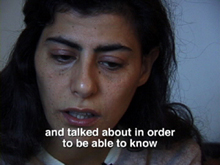 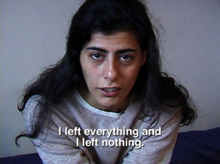
Untitled: Part 1 everything and nothing, 41 min 2001
untitled' is an ongoing multi-channel video installation continuing Jayce
Salloum's series of projects addressing social and political realities
and representations, manifestations, and enunciations, focusing on borders
/ nationalisms / movements (shifts, transitions, and interstitial space/time)
and subjectivity and the conditions of living between polarities of culture,
geography, history, and ideology.
everything and nothing, part 1 from the continuous tape, "untitled"
Language: Arabic with English Subtitles
An intimate dialogue
that weaves back and forth between representations of
a figure (of resistance) and subject with, *Soha Bechara ex-Lebanese
National Resistance fighter in her Paris dorm room taped (during the last
year of the Israeli occupation) one year after her release from captivity
in El-Khiam torture and interrogation centre (S. Lebanon) where she had
been detained for 10 years, 6 years in isolation. Revising notions of
resistance, survival and will, recounting to death, separation and
closeness; the overexposed image and body of a surviving martyr speaking
quietly and directly into the camera juxtaposed against her self and
image, not speaking of the torture but of the distance between the subject
and the loss, of what is left behind and what remains
Jayce Salloum has been working in installation, photography,
video, mixed media, text, and performance, since 1975, as well as curating
exhibitions, conducting workshops and coordinating cultural projects.
His work takes place in a variety of contexts critically engaging the
representation and actualization of social manifestations and political
realities. A media arts philosopher and cultural activist, Salloum has
lectured internationally and has exhibited throughout the Americas, Europe,
East Asia, and the Middle East, at institutions including The Museum of
Modern Art; American Fine Arts; Artists Space; National Gallery of Canada;
Canadian Museum of Contemporary Photography; Canadian Museum of Civilization;
New Langton Arts; Los Angeles Contemporary Exhibitions; Long Beach Museum
of Art; Walker Arts Center; The Wexner Center; YYZ Artists Outlet; A Space;
Contemporary Art Gallery, Vancouver; Western Front; Optica Gallery; Oboro;
Dazibzo; Mois De La Photo à Montréal; Miyagi Museum of Contemporary
Art; Hara Museum of Contemporary Art; Kunstlerhaus Bethanien; Werkleitz
Bienniel; Galerie Nationale du Jeu de Paume; Cinematheque Française;
Institute du Monde Arabe; Espace Lyonnais d'Art Contemporain; Shedhalle;
Rote Fabrik; Rotterdam International Film Festival; Singapore International
Film Festival; British Film Institute; Museo Nacional Centro De Arte Reina
Sofia; Museo de Arte Contemporáneo, Seville; CaixaForum, Barcelona;
and Théatre de Beyrouth. His texts have appeared in many catalogues,
and journals such as, Documents, Framework, Fuse, Felix, Public, Pubic
Culture, and Semiotext(e). In 2003 he represented Canada at the 8th Havana
Biennial.
top
____________________________________________________
2. Jesal Kapadia
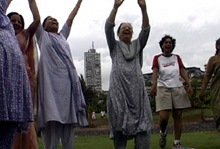 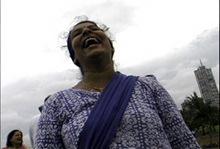 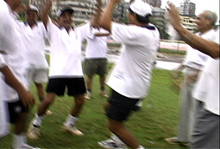
Laughing Club, 8min 2002
The laughing clubs, also known as laughter yoga, have become a popular
phenomenon both in the West and in India, where they originated. Based
on laughter’s therapeutic effect on the body as well as inspired
by the Reader’s Digest quote, “Laughter is the best Medicine,”
these clubs are largely urban entities. This video visits one such club
in a park in south Mumbai, a “global city” set uneasily at
the juncture of regional, national, and transnational processes. Laughter
is explored as an ambivalent phenomenon in which technologies of the self
and spontaneous affect become undecideable, registering post-colonial
urban anxiety as much as a “natural” human propensity
Artist Statement
My work revolves around the very experience of migration, and its effects
on
the immigrant body. The hybridization and appropriation that occurs as
a
consequence across both the cultures, is what I try to represent and
question in my work. Drawing from contemporary South Asian literature,
postcolonial feminist theory, questions of nationalism and migration,
as
well as the uneven global history of modernist art practice, my intent
is to
create a rupture or potential for a break in the space that is occupied
between the Indian and American cultures.
Bio
Jesal Kapadia is a visual artist and co-editor of the arts for the journal
Rethinking Marxism. She moved to the United States seven years ago from
Mumbai, where she worked as a Graphic Designer. She is a graduate of the
Whitney Museum‚s Independent Study Program in New York City and
a recipient
of the Massachusetts Cultural Council grant for 2003-04 Film and Video
artists. She currently teaches at CUNY College of Staten island and
International Center for Photography.
top
____________________________________________________
3. Paul Chan
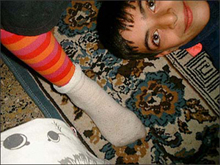
BAGHDAD IN NO PARTICULAR ORDER, 51 min 2003
Part I, BAGHDAD IN NO PARTICULAR ORDER is an ambient video essay of life
in Baghdad before the invasion and occupation. Men dance, women draw and
sufis sing as they await the coming of another war. In seven languages
(Arabic, Chinese, English, French, German, Italian and Spanish). Subtitled
in English.
Paul Chan
New York City-based media artist Paul Chan is a 2003 Rockefeller Foundation
New Media Art Fellow and director of an online political/aesthetic thinktank
at www.nationalphilistine.com.
top
____________________________________________________
4. François Bucher
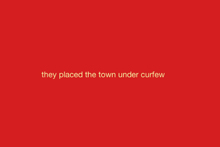
Attaining the Body, 8 min 2003
"Recently, the Israeli army performed an operation whose symbolic
content is
so strong and brutally pointed that probably no artist dealing with
television has ever been as successful in speaking about the medium. Their
brutal performance could be a third step in Paul Virilio’s account
of the
relationship of the weapon and the image-making apparatus: “Great
Importance
was attached to pictorial representation in the Oriental military sects.
The
warrior’s hand readily passing from brush to sword. Similarly, a
pilot’s
hand trips the camera shutter with the same gesture that releases the
weapon.”
The action, performed around the same time that one of their soldiers
had
shitted on a photocopier in Ramallah (“Someone Even Managed to Defecate
Into
the Photocopier”), denotes a very sophisticated understanding of
the
psycho–sexual and military powers of the televisual image. A kind
of
imagistic enlightenment that was used in the most obscure way imaginable..."
François
Bucher is an artist from Cali, Colombia; he lives and works in
New York City. Bucher’s work investigates “the image”
as it circulates in contemporary culture. His reflection focuses on cinema
and television highlighting a politics of the moving image. Bucher has
initiated several projects and collaborations that seek to open alternative
spaces of thought.
His work has been exhibited internationally in group and solo shows including:
Fusebox Gallery, Washington DC, Location One, New York, 2002; Empire/State,
Whitney Museum Independent Study Program, New York, 2002; Speaking Truths,
Intermedia Arts, Minneapolis, 2002; The S-Files, Museo del Barrio, 2003;
White Box, New York, 2002; Valenzuela y Klenner, Bogotá, 2003;
Smack Mellon Studios, New York, 2002, 2003; Prague Biennial, 2003; 24/7,
CAC, Vilnus, 2003; Slowness, Dorsky Gallery, New York, 2003; Dándole
Vuelta la Poder, Centro Cultural La Recoleta, Buenos Aires, 2004, Cine
y Casi Cine, Museo Reina Sofia, Madrid, 2004; Transmission, Musée
des Beaux-Arts in Nantes, 2005. His films and videos have been included
amongst many other places in the Oberhausen Film Festival, 2002; Impakt,
Utrecht, 2002; Next 5 minutes, Amsterdam, Kassel Documentary Film Festival;
European Media Arts Festival, Osnabruck, 2003; The Museum of Contemporary
Art, Chicago, 2002; Reencontres Internationales Paris/Berlin, 2003; Transmediale,
Berlin, 2004; INPUT 2000, Halifax; The Pacific Film Archive at U.C. Berkley,
2003; The New York Video Festival at Lincoln Center, 2002; Chicago Filmmakers,
2003, and The Turner Prize Film Program at The Tate Gallery, London, 2002.
His work is distributed by the Video Data Bank and is included in the
collections of Bard College, Princeton University, University of Essex,
Museo de Arte Contemporaneo de Castilla y Leon, MUSAC and the University
of California at Santa Cruz.
Bucher has initiated several projects, amongst them Part Two: A Network
Event on World Conflicts, and Television (an address). His essays and
projects have been included in Saving the Image: Art After Film edited
by Tanya Leighton and Pavel Büchler; Here and Elsewhere edited by
OE, Denmark, Journal of Visual Culture, Revista Valdez, Files, MUSAC;
Artwurl, the online Magazine of PS 122 (August, 2004) amongst other publications.
From 1999–2000 Bucher attended The Whitney Museum Independent Study
Program in New York. In 1999 he finished his MFA at The School of The
Art Institute of Chicago where he received the MFA fellowship prize. He
was awarded the first prize at VideoEx, 2003, Zurich; The Prize of the
Jury in Videolisboa, Lisbon, 2003, First prize at Premio a la Videocreación
Iberoamericana, Museo de Arte Contemporaneo de Castilla y Leon, MUSAC,
2004 and the Werkleitz Award 2004 in Transmediale, Berlin. He was also
awarded a prize from the Film División of the Ministerio de Cultura,
Colombia, 1997, and the Alliance Française Prize in Bogotá,
2001. He is a recipient of The New York City Media Arts Grant of The Jerome
Foundation, 2000. Bucher is a founding co-editor of Revista Valdez presented
at Centre d'édition Contemporaine, Geneva, 2003 and the Armory
Show in 2004.
top
____________________________________________________
5. Peter Lasch
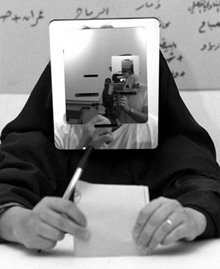
Naturalizations: Media Defacements (Episode #1), 90 seconds, 2004
Selection from Naturalizations: The Users' Video Manual
This video moves through 20 fabricated images based on photographs published
in the media, all related directly to hidden human faces. The images are
accompanied by a soundtrack, voice-over and text that opposes the consumption
of identity in the way the various represented masks, burqas, ski-masks,
and mirror-masks do.
Short synopsis (49 words):
This video moves through 20 fabricated images based on photographs published
in the media, all related directly to hidden human faces. The images are
accompanied by a soundtrack, voice-over and text that opposes the consumption
of identity in the way the various represented masks, burqas, ski-masks,
and mirror-masks do.
------------------------------
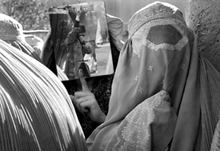 
------------------------------
Artist statement (Longer Version-661 words):
This short video (90 seconds) is part of an ongoing project I began in
2003. The overall process brings together exchanges, installations, screenings,
and social situations under the general heading of Naturalizations and
consists of the production and distribution of a set of flat plexi mirror-masks.
The overall "theater of the everyday" production is conceived
as a page by page publication, each mirror-mask being a page as well,
scattered socially, spacially, and temporally. The sum of the growing
number of scattered mirror-masks, or pages, constitutes The Book of Mirrors,
a book that is only worth reading with two or more people at once. All
other edited materials related to the different versions of Naturalizations
are compiled in a work in progress called The Users' Manual, which is
simultaneously a documentary publication, a manual, an illustrated children's
book. The Users' Video Manual is based on the same material, but takes
the form of an instructional video composed of short segments that correspond
to each facet of the project. These segments, or episodes may be watched
together or independently.
Naturalizations: Media Defacements (Episode #1) corresponds to the segment
of the project with that same title. All versions before Media Defacements
were based on the physical use of the mirror-masks in social contexts
which highlight the cultural conflicts inherent in subject formation,
national identity, gender, age, race, psychogeography, and many other
such "naturally social things". Past contexts include dances,
performances, political street actions, and other regular collaborations
with Mexican and Latino immigrant groups (Asociación Tepeyac de
New York, Mexicanos Unidos de Queens), a restaurant version (Brewster,
NY), gallery and museum installations (Baltic Centre for Contemprary Art,
England; Mütter Museum, Philadelphia; Queens Museum of Art, New York),
experimental workshops and video productions (Las Diosas, What is 16Beaver;
The Story of Colors), among many others.
Naturalizations: Media Defacements differs from previous versions in that
the mirror-masks are physically absent. The project is now literally contextualized
in the more conventional act of reading and viewing the media. Conflicting
experiences of the natural or the alien, and the various perceptual shifts
the masks habitually produce in their users, are now transferred to the
"natural landscape" of photographic journalism and media consumption.
I have selected images from the media and have significantly altered them
to open an internal dialogue between seemingly disparate areas of the
contemporary world stage. The original photographs all share a common
icon: human defacement. Indigenous zapatistas wearing black ski-masks
in southern Mexico, women wearing blue burqas in Kabul or black abayas
in Saudi Arabia, Iraqi torture victims wearing green or black hoods at
Abu Ghraib, Jacko wearing a mask in Russia, and black bloc members covering
their face in Seattle, are but a few examples of the "refusal of
the face" which has become the paradoxical icon of our generation.
Originally published in the journal "Rethinking Marxism" as
printed images, the 20 digital constructions that compose this segment
are now presented as stills within a video narrative that weaves together
picture, sound, and text in consistent strokes of refusal. Just like the
masks continually, yet seamlessly evade the gaze and the consumption of
identity, the voices and text in the video, escape direct reading and
understanding by redirecting sound and meaning in an array of unexpected
angles which produce an extended act of viewing and listening.
The eyes of the Western media consistently deface human identity not ready
for consumption. The royalties and copyright assumed to belong to he or
she who holds the camera are denied to the he or she who is depicted,
unless, of course, the camera looks up to the hand that feeds it. The
alteration of the "original" media images through the fictionalized
spatial possibilities of the mirror-masks disrupts specific habits in
the act of reading, viewing, and listening, but it also asks whether a
militant viewership is able to reinscribe power in the faces of those
who actively refuse to be stripped of all dignity.
Peter Lasch
was born and raised in Mexico City, and moved to New York City
in 1994. He currently shares his time between New York City, as director
(also founder) of Asociación Tepeyac‚s experimental arts
program "Art,
Story-Telling, and the Five Senses" (El arte, el cuento y los cinco
sentidos), and Durham, North Carolina, where he serves as fulltime
professor of visual arts at Duke University.
About his work
Peter Lasch sees his work as a consecutive set of acts and ideas, which
complement and interrupt the flow of the everyday, a chain of
routine-breaking routines. His role as an artist, educator, activist,
cultural organizer, and producer need to be understood as a cohesive
whole, which develops within specific social situations and exists mostly
outside of the conventional art context. His presentations in museum and
gallery settings represent only a part of his overall production. A
preoccupation with the theory and practice of socially engaged art, which
is rooted in daily exchanges, has led him to the formulation of an
aesthetics based on public interventions, social interactions, games,
and
temporal rearrangements.
top
____________________________________________________
6. Alia Hasan-Khan
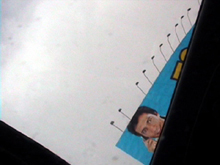  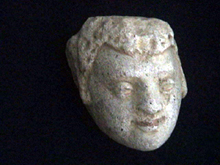
Kidnapped: homage to Karachi, 5 min 2004
Like many mega-cities throughout the world where there is huge disparity
in wealth, kidnappings of the elite classes have become a common occurrence
in Karachi. This video is a journey through the city, from the perspective
of a person kidnapped, lying in the back seat of a car, eavesdropping
on the conversation between the two men in the front seat.
Alia Hasan-Khan is a Pakistani artist working
and living in the U.S. for the past nine years. Her recent work is concerned
with stereotypes and mainstream American representations of Muslims (and
Pakistanis, specifically). Her work engages with social and political
issues in direct and palpable ways. Through her work she reflects on the
constructs of global phenomena like ‘war on terror’ or ‘trade
liberalization’ and their impact upon her locale.
She received her B.F.A. from the Indus Valley School of Art & Architecture
in Karachi, her M.F.A. from Tufts University/School of the Museum of Fine
Arts in Boston, and is a graduate of the Whitney Museum of American Art
Independent Study Program. Her work has been included in exhibitions across
the U.S., Europe, Canada and Pakistan. She recently has had shows at the
Lower East Side Tenement Museum and Apex Art Gallery, both in New York;
a public art project in Austin, Texas; and the Contemporary Museum in
Baltimore, MD among others. Her work has also been featured in magazines
and journals, most recently in the April 2004 issue of Rethinking Marxism.
She is currently living and working in Austin, Texas.
top
____________________________________________________
7. Ayreen Anastas
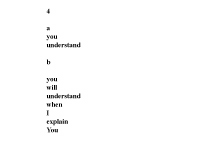
Know Fundamentalism, 6 min 2004
A music video for 'Sharraft Ya Nixon Baba' by egyptian political singer
Sheik Imam from the seventies. The lyrics of the song, by the poet Ahmad
Fouad Najem, welcome President Nixon Sarcastically into the arab world
describing the relations between the corrupt leaders and Nixon, which
might have given the president the wrong impression that the Egyptian
people are an easy prey. ' But as they say, the Egytion flesh is hard
to digest'.
The text which scrolls with the song derives from two entries
Know-Nothing and Fundamentalism as defined in THE
NEW SHORTER OXFORD ENGLISH DICTIONARY THE USEFUL EDITION EDITED BY AYREEN
ANASTAS

m* of Bethlehem, 21 min, 2003
m* of Bethlehem is a video map of Bethlehem in January 2003, inspired
by a map of the city from 1973. It concerned what was absent and what
was represented on the map in relation to the actual site today. Views
include streets during times of curfew, a refugee camp, an encroaching
Israeli settlement, and signs posted on olive trees warning that the
land will soon be confiscated.
*m = meaning also map
the Voice Over -- the meaning of Bethlehem
the Voice Over of the video consists of the Meanings of Bethlehem
according to THE NEW SHORTER OXFORD ENGLISH DICTIONARY
THE USEFUL EDITION (VERSION 1) EDITED BY AYREEN ANASTAS
B
Bethlehem
1 Former name of Oslo, capital of Norway. 2 The bell itself;
the time
of its ringing; the practice of ringing a bell at a fixed hour each
evening (for any purpose). 3 A condition that is required to be
satisfied at all or part of the boundary of a region in which a set of
differential conditions is to be solved. 4 The rights privileges, or
possessions belonging to one by birth, as an eldest son, as being born
in a certain status or country, or as a human being. 5 A region in
which a population of organisms can survive through an unfavourable
period. 6a Keep in a place, within or to limits or a defined area;
restrict, secure. (lit. & fig). b Shut up, imprison (in, into). c
Oblige a person to remain in doors, in bed, etc., through illness, bad
weather, etc. 7a Of an edge of a weapon: blunt. b Of trade: slow,
stagnant, not brisk. c Of goods etc. : not easily saleable. d Of a
person, a mood, etc. : depressed, listless, not lively or cheerful. 8a
The public voice as expressing condemnation. Hence, an opinion
generally expressed. b A loud importunate call; an appeal (for mercy,
help, etc.) c A proclamation of goods or business in the streets; a
street vendor's special call. 9 A military force, a body of soldiers;
spec. a military force raised from the civilian population, as
distinguished from mercenaries or professional soldiers; an auxiliary
military force drawn from the civilian population in order to
supplement the regular forces in an emergency; collect. the members of
such a militia. 10a The faculty by which things are remembered; the
capacity for retaining, perpetuating, or reviving the thought of things
past; an individual's faculty to remember things. b The capacity of a
body or a substance for manifesting effects of its previous state,
behaviour or treatment, or for returning to a previous state when the
cause of the transition from that state is removed; such effects, such
a state. 11 Dear, from base meaning 'to love': a Of a person: not or
no longer in bondage, servitude, or subjection to another, having
personal rights and social and political liberty as a member of a
society or State. b Of a state its citizens, and institutions: enjoying
national and civil liberties, not subject to foreign domination or
despotic or tyrannous government. c Designating (freq. w. cap. initial)
a political or racial group actively opposed to an invading, occupying,
or hostile power d Acting from one's own will or choice and not
compelled or constrained; determining one's own actions or choice
without outside motivation. e Not impeded, restrained, or restricted in
actions, activity or movement; unhampered, unfettered. 12a Precisely,
exactly, just altogether, to the full. b Never happy about our life
together, right from the start. c I was born right here in Clarion. 13
She remembered him clearly; she was proud of her memory. 14 fig. an
organ of sense, esp. an eye (usu. in pl. in windows of the mind and
soul); an opportunity for study and insight. (frep. foll. by into, on).
They ...smashed the window"" 'no walk this day!' said that young
person, looking sadly out of the window. 15a Apartment house, country
house, farm house, manor-house, mansion-house, town house, Wendy house,
etc. b. alehouse, almshouse, bake house, bath-house, bawdy-house,
boarding-house, coffee-house, clubhouse, court-house, custom-house,
doss-house, dwelling-house, eating-house, guardhouse, guest-house,
lodging-house, madhouse, meeting-house, opera-house, playhouse,
slaughterhouse, summer-house, wash-house, whore-house, workhouse,
etc.16 The bomb had demolished a group of houses. 17 Issued by a local
authority for the pulling down of a building or buildings. 18 The
branch of knowledge that deals with human populations; esp. the
statistical analysis of births, deaths, migrations, disease, etc., as
illustrating the conditions of life in communities. 19 A densely
populated slum area occupied by a minority group or groups, usu. as a
result of social or economic pressures; an isolated or segregated
social group or area. 20 In Arabic mythology, a desert demon preying on
travelers; gen an evil spirit or demon supposed to rob graves and
devour corpses; a person unnaturally interested in death. 21 Speak
rapidly and inarticulately; chatter, talk nonsense. 23 You hate them
and wish they were dead. 24 Anything is possible to the man with a
killing weapon. 25 I'll have the story killed and the journalist fired
immediately. 26 What annoyed him was their fanatic sense of
righteousness, their absolute certainty that...they alone had God's
ear. 27 Drain completely of resources.
Ayreen Anastas is an artist living in Brooklyn, New York.
Originally from palestine, she moved to germany in 1989 for a DAAD scholarship.
Alongside her artistic practice, she is involved in the Artist Collective
16 Beaver Group ≤16beavergroup.org≥.
top
____________________________________________________
8. Avi Mograbi
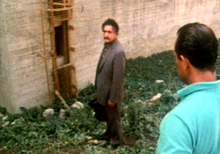
Deportation, 12 min, 1989
A short film consisting of one scene in which three people are deported
from their country. What happens in the film looks less like a deportation
than anything else. All the brutal externals of the deportation have been
peeled away, to leave the act itself exposed to a moral discussion.
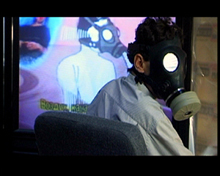
Happy Birthday, Mr. Mograbi, 77 min, 1999
A Semi-Documentary
synopsis
Avi Mograbi, a documentary filmmaker is hired by a TV producer to make
a film about the celebrations of Israel's fiftieth anniversary. The producer
is tuned in to the media, and his mood swings accordingly. When the unemployment
crisis breaks out, he washes his hands of the anniversary film and seeks
to make a penetrating, socially engaged film instead. The deadlock in
the peace-process leads the producer to a decision to make a film that
will bring peace to the Middle East. During the newly awakened Gulf crisis
the producer shuts himself away behind polyethylene sheets, gas-mask on.
At this point he is not interested in making any film at all.
In the meantime a Palestinian film-producer from the Palestinian Authority
makes contact with Mograbi. The Palestinians, too, mark the fiftieth anniversary
- of the creation of the Palestinian refugee problem - the Nakba (catastrophe).
He asks Mograbi to help him out in producing a film about the Nakba. He
wants him to shoot locations that used to be Palestinian and became Jewish
settlements following the 1948 War. He only wants pictures of places,
no interviews nor events. Just places, houses, ruins, signs of life lost.
The same filmmaker tells the camera a story about himself, a story involving
the purchase of a lot in the outskirts of the city, with the intention
of building a small house to improve the quality of living, fulfill the
Israeli Dream. This optimistic project turns into a sheer nightmare. Questions
of ownership of the lot lead to violence between neighbors. He develops
an obsession of self-documentation. Fragments of supposedly unplanned
shooting find their way into the film and construct a personal, seemingly
documentary, narrative.
During an interview concerning the Fiftieth Anniversary Celebrations,
Mograbi discovers that this year his own forty second birthday and the
State of Israel's fiftieth Anniversary - which is celebrated according
the Hebrew calendar - coincide.
The material he shoots for the Palestinian project becomes a kind of a
disruption of the film. The remains of the destroyed Palestinian villages
invade the film as a kind of pirate broadcasts over legitimate channels.
Shots of ruined Palestinian houses, of Palestinian homes turned into Jewish
homes, of settlements sprouting ruins of former villages - take over the
picture while the sound-track tells the history of those places.
In its last third, the film becomes an argument, a strife between its
three channels, its three narratives. Each one tries to overcome the others
and take over the screen. One story may take control for a minute, then
another disrupts and takes over with a kind of "video static".
The film ends on the eve of Israel?s Independence Day. People are celebrating
in the streets. The Palestinians in the Occupied Territories mark the
Al Nakba - the catastrophe. Fireworks light up the sky. Palestinian protesters
are shot dead by Israeli soldiers. Mograbi sits at home alone and finishes
the telling of the three parallel stories.Director’s statement
In 1997 the date of my birthday was two days before Israel?s Independence
Day. I was in New York on a family visit and it so happened that I celebrated
my birthday two days later, on Independence Day. This coincidence provoked
in me thoughts that eventually bore the nucleus to the film ?Happy Birthday,
Mr. Mograbi?.
In 1998 Israel celebrated its 50th anniversary and I decided to celebrate
my own anniversary on the same date (though it was due only ten days later.
The Israeli Independence Day is marked according to the Hebrew calendar,
therefore it is not marked on the same date every year).
The raw idea was to tell two parallel stories. The first about the making
of a documentary following the jubilee celebrations. The second about
the middle age crisis of the filmmaker making this documentary - me -
whose birthday coincides with that of the state. These two stories were
supposed to run a dialogue, or in fact argue, on the screen.
For several months I have juggled with this idea but something was bothering
me, and when I realised what it was it seemed obvious. I realised there
was no way to mark these two anniversaries without marking a third - the
Nakba - the 50th anniversary of the Palestinian catastrophe.
Now, the third channel of the script began to take shape. In this line
of story a Palestinian producer hires the same filmmaker to shoot stuff
for a film the Palestinians are making to mark the Nakba.
The material he shoots for the Palestinian project takes the form of a
kind of a disruption of the film (the ?final? one, the one you watch).
Images of remains of destroyed Palestinian villages invade the film like
pirate broadcasts invade legitimate channels. Shots of ruined Palestinian
houses, ruins of former Palestinian villages - take over the picture without
warning reaching the climax of the film on Israel?s Independence Day,
the Nakba memorial day and the birthday of the filmmaker of all three
films.
I tried to make a film consisting of three different story lines that
run in one man?s consciousness, that of the filmmaker of the three films.
Only the materials here have greater freedom than usual. They run along
the script notes for a while and then take over the script, and create
their own order of events. The filmmaker, poor guy, has to cope with the
consequences of the new conjunctures created.
Bio
Born in Israel in 1956. Between 1979 and 1982 Mograbi studied
philosophy at Tel Aviv University and art at the Ramat Hasharon Art School.
Since 1982 he has been working as first assistant director in local and
foreign feature films and commercials. Directed his first film Deportation
in 1989. Filmography includes The Reconstruction (1994), How I Learned
to Overcome My Fear and Love Arik Sharon (1997), and Relief (1999, video
installation). As scriptwriter, A Tale That Starts With a Snake’s
Funeral (1993).
top
____________________________________________________
9. Rene Gabri
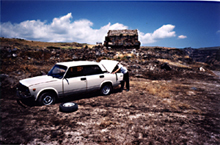
Movements, 42 min 2002
“You prepare cuts and stage a movement so as to allow reediting,
only to find at the editing table that the picture has a completely different
movement, one which you have to follow.” Harun Farocki
In 2001, the Iranian born artist made his first journey through Armenia.
Marked by a mass exodus of its population due in large part to the socio-economic
fallout after the decline of the Soviet Union, and still devastated by
the trauma of the earthquake in 1988 and the war with Azerbaijan, the
people of Armenia have been facing what continues to be an untenable situation.
As with most countries on the ‘losing’ side of capitalism,
Armenia continues to be characterized as a nation in ‘transition’,
‘developing’, but more often it seems stalled, along a roadside,
unable to move forward or backward, waiting interminably for the arrival
of what is to come. The video, a kind of experimental road movie, interweaves
extended tracking shots with interviews of road workers, wanderers and
hitchhikers, and still sequences of half destroyed churches, half built
buildings, empty apartments, cafes, and roadside kabob houses; all the
while, tracing the movements of/through a people/country ‘in transition’
and in between (an end and a beginning).
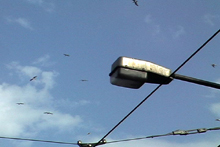
Istanbul Why, 20 min 2004
In 2004, on his way
to Singapore, the artist had an 8 hour stopover in Istanbul and thus his
first visit to Turkey. The video tells the story of a day's journey into
a city, marked by all the unfamiliarties and innocence of discovering
a new place as well as the ghosts and specters haunting a relentless and
unforgettable past.
Rene Gabri, Iranian-Armenian artist, born in
Tehran, moved to Athens, then Los Angeles, now based in New York. Often
working with film, video, audio and text; he has been exploring a broad
range of topics including cities, memory, confession, popular culture,
television, music and issues related to in-between-ness and drifting in
general. In addition, to his individual projects, he has been involved
with and initiated a broad range of collaborative situations and frameworks.
At the conclusion of the Whitney Museum’s Independent Study Program
in 1999, Rene was involved in starting 16Beaver (16beavergroup.org). Since
that time he is active in maintaining an ongoing platform and space for
independent critical, cultural, political inquiry and friendship. His
work with Ayreen Anastas has evolved a great deal through their work at
16Beaver. Their Radioactive Discussion series was a physical counterpart
to their fictional Homeland Security Cultural Bureau (hscb.org) project.
Together with Erin McGonigle and Heimo Lattner, he also works with the
name e-Xplo (e-Xplo.org), creating projects which often involve mapping,
exploring, and developing a vocabulary for particular sites. Most recently
he has taught at University of Architecture in Venice and the City University
of New York in Staten Island.
top
____________________________________________________
10. Emily Jacir

Nothing Will Happen (Eight Normal Saturdays in Linz), 18 minutes
2003
Every Saturday at exactly 12 noon, air raid sirens are heard
throughout the city of Linz. Emily filmed the city's main square, taken
from an aerial perspective, one minute before noon and one minute after
for the duration of her two-month stay at the OK Centrum in the fall of
2003. Each Saturday she recorded the city below and the the sounds of
the sirens echoing throughout the city from the exact same position.
Emily
Jacir, is a Palestinian artist who lives and works between
Ramallah and New York. Her work focuses on issues of movement (both forced
and voluntary), dislocation, radical displacement and resistance. It also
addresses the unconscious markers of borders(both real and imagined) between
territories, places, countries and states. She employs a variety of media
in her practice including video, photography, performance, installation
and sculpture. Her solo exhibitions in 2004 include The Khalil Sakakini
Centre in Ramallah, Palestine; Nuova Icona, in Venezia, Italy; Kunstraum
Innsbruck in Innsbruck, Austria and Künstlerhaus Bremen, Bremmen,
Germany. In 2003 solo exhibitons include include Debs& Co, NY; Los
Angeles International Art Biennial, Frumkin/Duval Gallery, Santa Monica,CA;
and the O-K Center for Contemporary Art in Linz, Austria. Jacir was also
featured in the 2004 Whitney Bienniel, the 8th International Istanbul
Biennial in September 2003 and will be in the Gwangju Bienniel in Korea
this September 2004. She has exhibited her work in group exhibitions internationally
at spaces which include most recently Modern Art Oxford, Oxford, United
Kingdom(2004); Limerick City Gallery of Art, Limerick, Ireland(2004);
Häusler Contemporary, Munich, Germany(2003); Bury Art Museum, Bury,
England(2003); Grazer Kunstverein, Graz, Austria(2003); Contemporary Art
Centre, Vilnius, Lithuania(2003); New Art Gallery Walsall, England (2003);
UCR/California Museum of Photography, Riverside, CA(2003); Queens Museum
of Art, NY(2002); Apex Art, NY (2002); Kunsthalle Exnergasse, Vienna,
Austria (2002); La Panaderia, Mexico City, Mexico (2002); Kunstbunker,
Nuremberg, Germany(2002); Biagotti Arte Contemporanea, Firenze, Italy
(2001); P.S.1 Contemporary Arts Center, NY(2001). Recent articles on her
work include The New York Times, The Guardian, The Los Angeles Times,
Art in America, Parachute, Artforum, Afterimage, Time Out New York, Haaertz,
This Week in Palestine and others.
top
____________________________________________________
11. About 16Beaver
New:
Since 1999, 16Beaver was set up as an open space or platform, which would
evolve, define, and alter itself through the participation and cooperation
of various individuals. We have organized well over 200 events, ranging
in format from lunches, walks, film/video screenings, and artist presentations
to readings, panels, and discussions. It is difficult to really evaluate
16Beaver as an artist collective in the common sense. Consider the following:
a. The “group” is open, changing, and fluid, closer to a growing
network of people rather than a member based group.
b. 16beaver as a platform allows for different kinds of collaboration.
Some of the individuals involved with 16Beaver do work together, sometimes
closer sometimes further from the 16Beaver context. These works might
relate in one way or another to 16beaver. However, there is no imperative
to see the work they do as Art.
c. The platform itself is also not intended as an art work; thus, no overarching
authorship is introduced. It is rather a question of ownership that anyone
who feels comfortable can possess.
d. The most ambitious "work" that takes place is of a social
and discursive nature and remains largely invisible.
e. All of the individuals/groups involved closely or loosely with 16Beaver
produce there own work. This work directly informs the the issues we engage
collectively as well as the people we invite to the space.
Thus, 16Beaver acts
as an intermediary point, giving space and time for a changing cast of
participants to exchange ideas and possibly build ground for collective
exchange, production or action (whether through writing, political activity,
or other forms of cultural production).
Platform, Political Club, Reading Group or Book Club, Association or Union,
Artist Community or Collective, Think Tank or Meet Space or A place to
give time. If there is a question of “experimentation” that
is implicated in our gatherings and activities, it is by virtue of producing
an indeterminate space between everyday life, politics, and cultural production.
Short:
16Beaver is the address of a space initiated/run by artists to
create and maintain an ongoing platform for the presentation, production,
and discussion of a variety of artistic/cultural/economic/political projects.
It is the point of many departures/arrivals.
MONDAY NIGHTS @ 16BEAVER
Since 1999, the Reading Group at 16Beaver has organized presentations,
readings, discussions, screenings, and panels with/by artists, curators,
thinkers, writers, and activists.
Monday nights are an evening to share time and generate discussions, links,
ideas. Meetings usually begin at 7pm and the location is almost always
at 16Beaver Street, 4th or 5th Floor.Some longer statements:1. When, What,
Where is 16Beaver (R. G. + H.G.)
top
The following text is a re-mix of two texts, one written by Helen
Gyger and the other by Rene Gabri
When is 16Beaver?
Central to how 16Beaver functions for me is a certain relation
to time. A relation that is based on sustenance, sustainability, regularity,
continuity, persistence. Not of the the “forever” kind, forever
remembered in time immemorial, immortal time, 16Beaver forever etc., etc.
Not even really of the (not for profit) corporation kind of time, outliving
its “founders”, its initial members, serving the community
with a clearly formulated mission forever and ever, etc., etc..
But of a time that is tied to now and how (how will we be understood,
how will we understand each other, how will we get there, how will we
formulate or contest prospective destinations). The question of now is
in a sense about accountability. How can one be accountable to the present,
to the everyday, in our relations to one another, our community, our public?
The question of how is in a sense about a utopia, something that might
be imagined, might never come to be, something that encourages thinking
about that tomorrow, the roads and structures that still remain unbuilt,
unexcavated.
This question of “now” may be more easy to grasp, because
it is about immediacy, urgency. It relates to issues that arise from engagement
with contemporary socio-political-cultural issues, subjects which interest
participants, subjects we are interested in within the context of our
work or thinking or everyday being as socially engaged individuals (e.g.,
Haider and the “Freedom” party elected in Austria, Sanctions
or War against Iraq, Turkey’s continued denial of the Armenian Genocide,
Occupation of Palestine, “Homeland Security”, "War on
Terror", United We Stand, etc. etc., …).
The question of “how” is more difficult. It requires time,
analysis, interrogation, contestation, debate, etc, etc., … . How
does one create and maintain community, what would a democracy or a community
underway look like? How could one create and inform and encourage a public,
a new public, a new relation to a public for one’s own cultural
and political practice? How can one realize, or embody the political or
cultural practice one is interested in developing?
In relation to both questions of how and now, or to the question of “When
is 16Beaver”, our working response, one which has been formulated
largely out of action, has been “everyday”. It is continuous,
regular, a part of one’s everyday, a time which takes place in-between
the privacy of one’s thoughts and interests and the publicity of
manifesting those thoughts into activities, readings, questions, discussions
for a larger group. A time that is allotted to one another, with a certain
commitment and a belief that out of that time, that given time, that time
spent together, some thing or time or idea(s) may emerge, hows may emerge,
hows related to nows.
16Beaver happens together, now, always with the possibility of and a relation
to tomorrow, without any promises of permanence.
What is 16Beaver?
Time will tell. For now one could say it is an informal collective
of artists, writers, and curators, based in New York, utilizing an open
and participatory structure, with no official membership or hierarchy.
Key activities are based around regular weekly meetings: reading together,
presenting work, organizing panel discussions and screenings. The collective
is somewhat unconventional in that although it sometimes germinates collaborations
through facilitating conversations between artists, and many of those
involved with the group are interested in the potential of collaboration
as an alternative practice, it does not exist to produce art. Instead,
what 16Beaver produces is a space; a platform to think and to talk; a
refuge from day jobs, from the commercial gallery scene; an "optimistic
community" to support and produce art, with links to other communities
of artists and activists; an alternative version of a New York artworld,
determined by artists, curators, thinkers, not economics.
Where is 16Beaver?
16 Beaver Street is the address of a small office building in
Lower Manhattan, where since 1999 the group has occupied the 5th floor
with half a dozen studios and a communal space for meetings and exhibitions.
Set up and run by artists to be financially self-supporting, the studio
rents cover the shared space without the need for outside grants. The
site was chosen as a deliberate point of insertion into non-art world
circuits, with the surrounding neighbourhood focused on finance and tourism,
housing the New York Stock Exchange, Battery Park, and the World Trade
Center site. In many ways, Lower Manhattan marks the historical core of
the city, and offers rich economic and cultural exchanges usually inaccessible
to alternative art spaces. Finally, beyond this immediate neighbourhood,
16Beaver email lists function as an extended platform for ideas and for
posting information, articles, and open calls. In effect, 16Beaver Group
operates as a number of overlapping communities, of studio tenants, meeting
participants, and online networks
top
|

